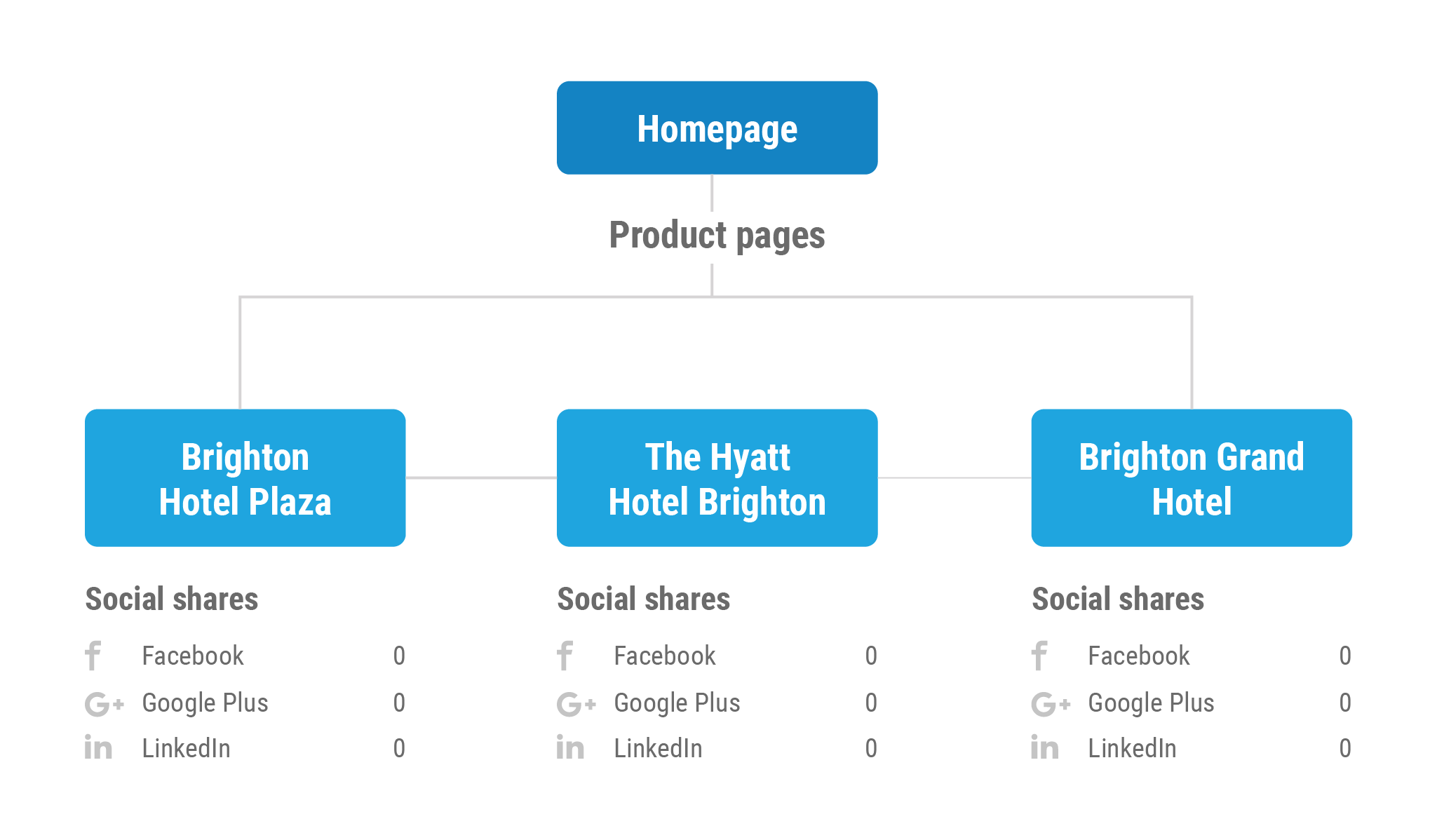
The recipe for Internal keyword cannibalisation:
Duplicate optimisation and theming – Example product search “Brighton Hotel”

Above I am using Hotels as an example of product keyword cannibalization, but this could be relevant for any product line.
Based on the profile of each Hotel (above), Google likely won’t be able to decipher which product to offer up in the SERPs, as all are equal in strength and theming. The same would apply if all three had the same amount of internal links and snippet copy too. Below is a working example of this.
Real Example: Amazon.com suffers from keyword cannibalisation in Google UK, for the Search Term “42 Inch TV”
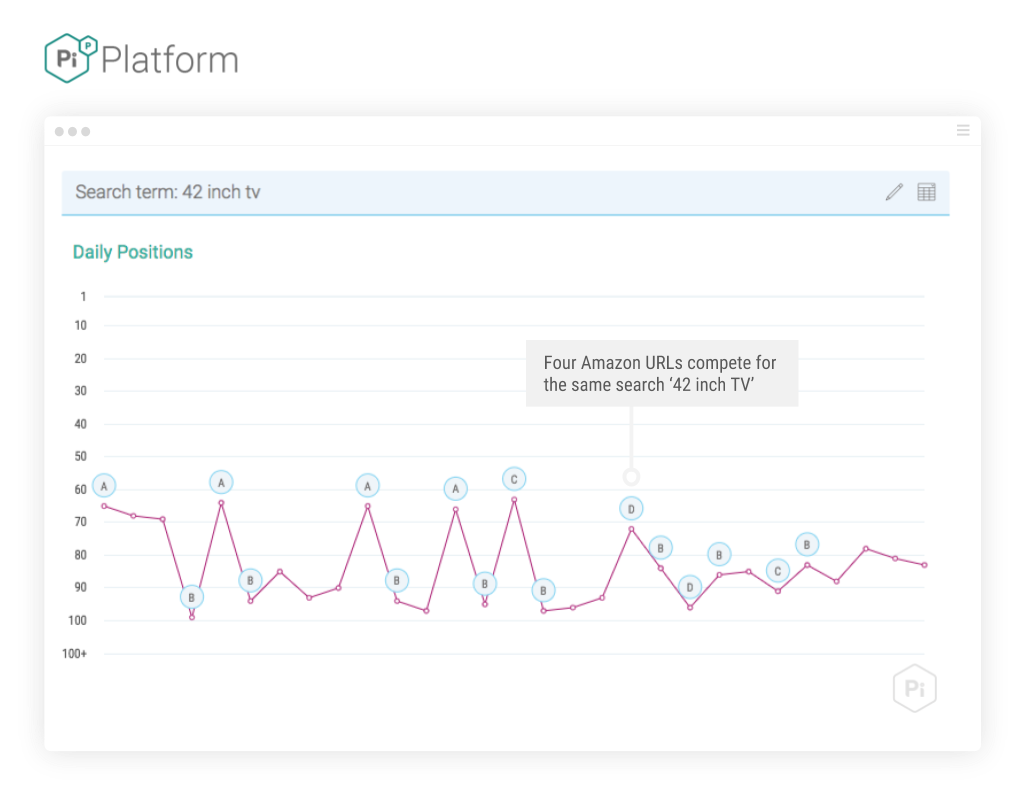
Image source: Pi’s SEO Platform
Here is the Amazon.com site in Google UK for the search term “42 Inch TV”. Amazon doesn’t have a landing page for this general term (it quite easily could), or at least Google isn’t recognising one.
Therefore all these separate product pages (noted by A, B, C, and D) are appearing for this same search term, and swapping positions.
In the chart above there are four separate URLs competing. Notice how when URL “B” is recognised by Google it brings the position in the SERPs down, to approximately page 8.
URL “A” was performing ok until “B” reared its ugly head. Amazon therefore needed to either create a landing page for this term or decide upon one product to feature prominently.
How do I avoid product and keyword cannibalization?
It’s not always easy to work out how to spot cannibalisation. However, one quick and simple (though not necessarily fool-proof) way to deal with the cannibalisation demonstrated above, would be to introduce a landing page and re-jig the product page theming, to ensure all internal links are pointing at the landing page.
Prevent Internal keyword cannibalisation by applying a landing page strategy – Example search “Brighton Hotel”
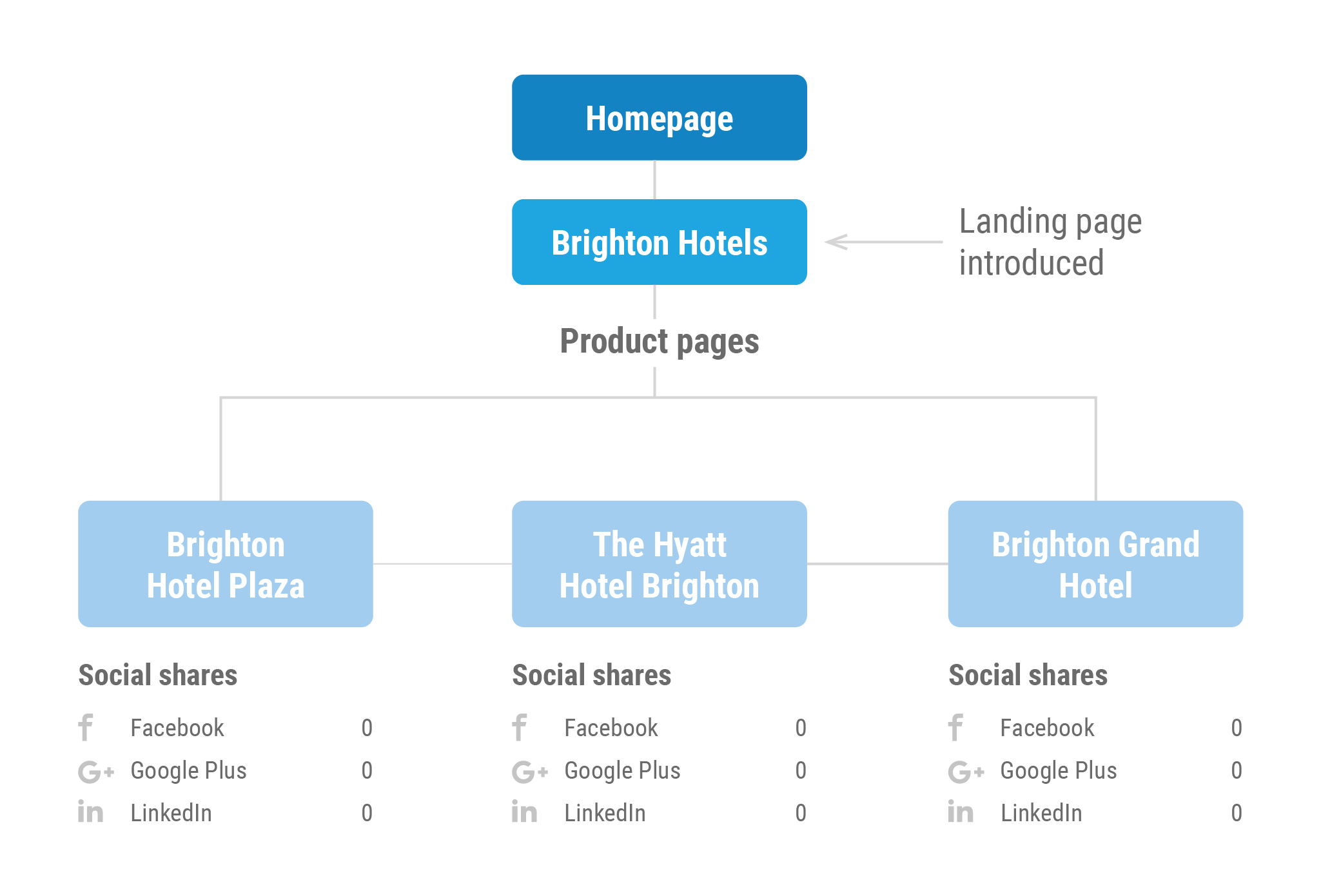
The image above shows that a landing page has been introduced to the “Brighton Hotels” section of our hotel site. None of the pages have any real strength, but the landing page has a direct link from the homepage and is themed around “Brighton Hotels”. It’s therefore stronger than the product pages and will return in the SERPs for the search term “Brighton hotels”.
Internal keyword cannibalisation – When a product page usurps a landing page – Example search “Brighton Hotel”
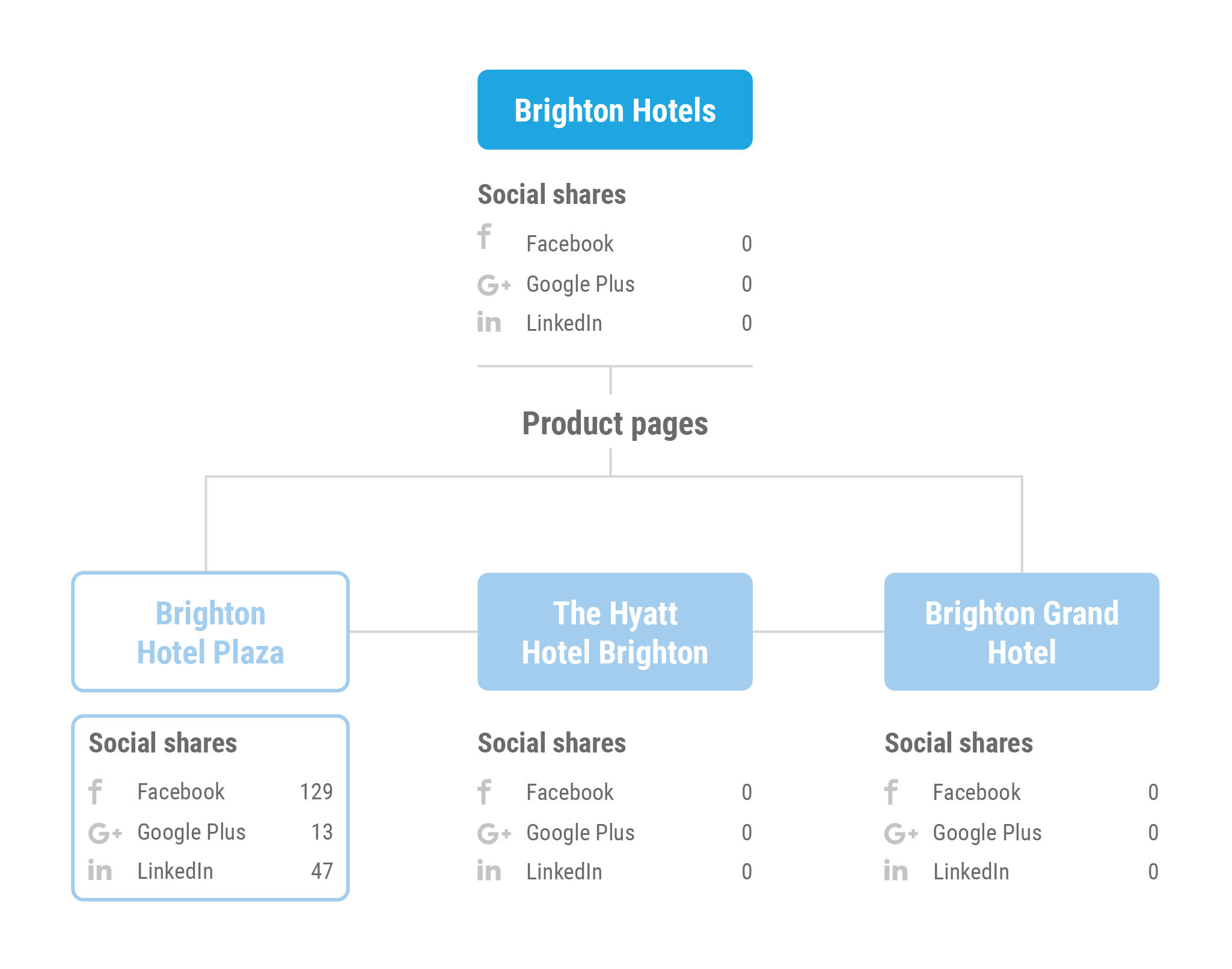
In this instance, the product page has stronger social backlinks than both the product and landing pages. It would therefore return highest in Google; eclipsing the other pages.
We saw a real example of this in the Daily Mail’s World Cup page. They had the right strategy, i.e. introducing a landing page based on the theme “World Cup”. However, the page was weak. Every new World Cup article published (which amounted to several every day) would usurp the weak landing page. This is because each article would go out on social media and on their RSS feeds and gain huge amounts of links, readers and traffic.
In the eyes of Google, those article pages were stronger for the themed phrase “The World Cup” than the actual landing page. Therefore, the strategy was good, but the execution was poor. Here we see the cannibalisation in detail using the Pi SEO platform.
The Daily Mail suffers from cannibalisation, as 43 URLs return for the search term “World Cup”
If you see in the column in the bottom right of the above chart, from Feb to June 43 different URLs featured from The Daily Mail for the term “World Cup”. This is acute cannibalisation, where one search term is shared between 43 different pages.
The Daily Mail suffers from cannibalisation, as article pages conflict with the landing page for the search term “World Cup”
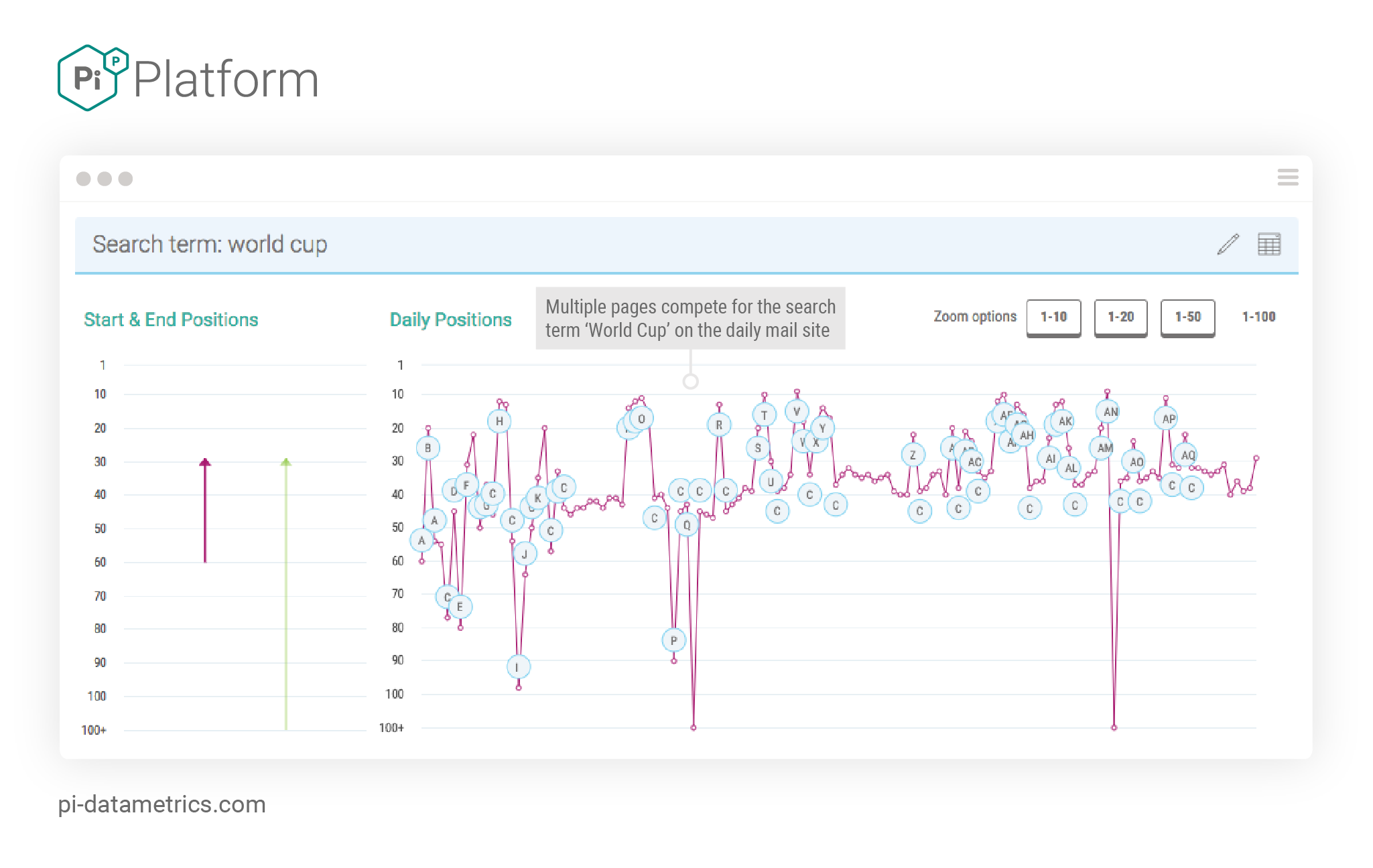
Image source: Pi’s SEO Platform
This chart shows the multiple URL changes. “URL “C”, which represents the landing page, appears recurrently, but continuously gets usurped by other newer pages.
This shows that there is next to zero optimisation, in terms of linking or theming, for this search term on the Mail site – with the landing page doing little to appease this. And remember this search term was one of the most searched phrases that year.
How do you fix keyword cannibalisation?
As we’ve seen, having a strong landing page can be the keyword cannibalization cure in the first instance. However this page needs to have good content and links.
To use the example above we can quickly analyse three of the main pages performing for the search term “World Cup”, in terms of their backlinks and social shares.
Level of on page optimisation for 3 Daily Mail URLs returning for the search term “World Cup”
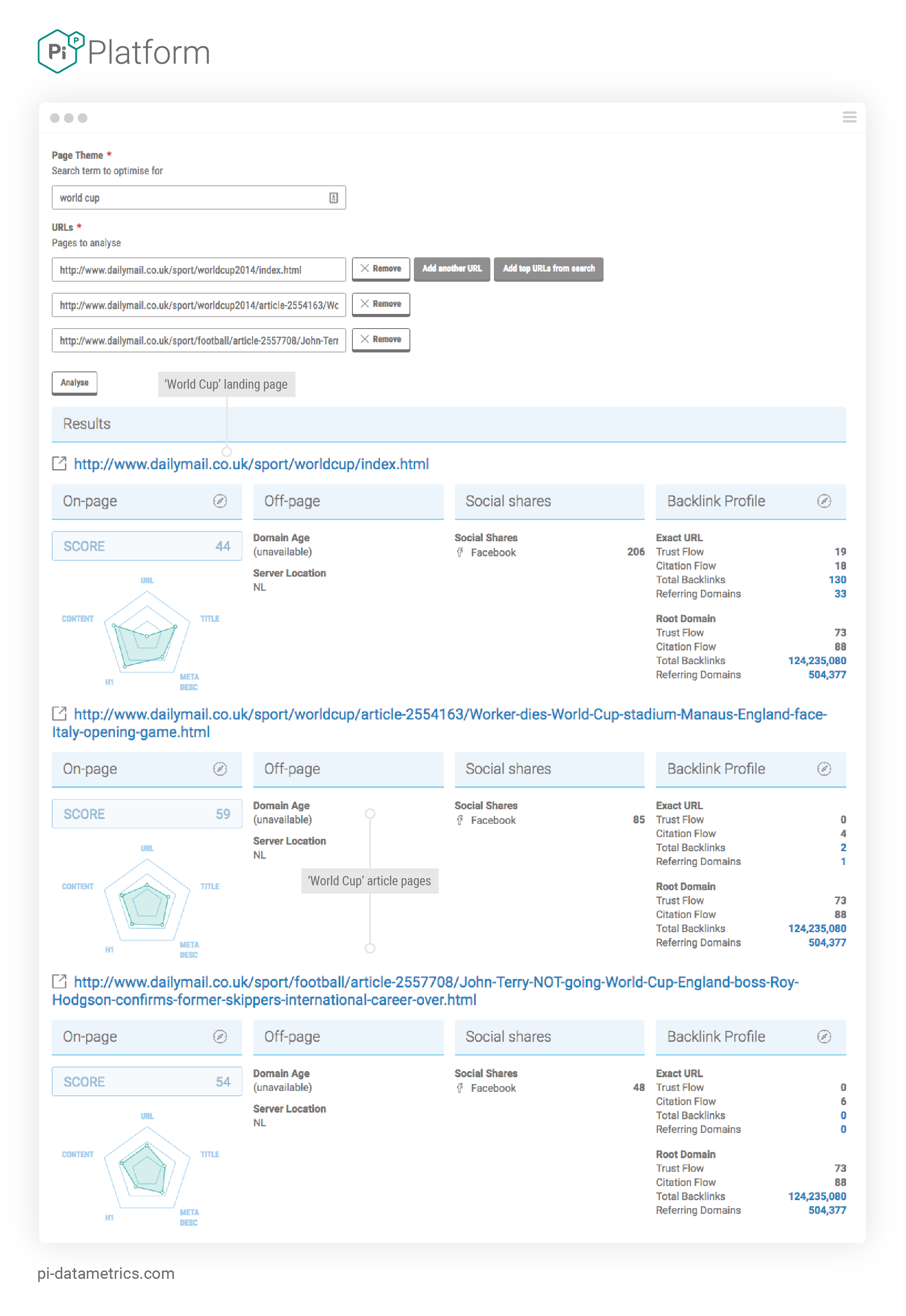
In the above image a score has been assigned to each URL. As it goes, the top URL (the landing page) has the lowest score for the search term “World Cup”. However, it has accrued some good social links and backlinks. A major difference between the first URL and the other two, is that it has no H1 tag.
Ultimately webmasters and content writers need to confirm which page they want to appear for a given search term. Once the page is decided upon then internal linking, content and backlink (including social) strategies should be devised.
If your product pages have strong link profiles, but continuously cannibalise each other, then in some instances you can 301 redirect them to a single page, to collate these links. You can then go on to create new product pages. This technique takes the view that the sum of all the parts is better than the individual parts.
However, monitoring your assets on a daily basis is the only way using to discover and remedy cannibalisation. Pi Datametrics SEO platform is the only tool on the market which gives you a daily, granular view of your URLs, and enables you to deal with such issues in isolation.



